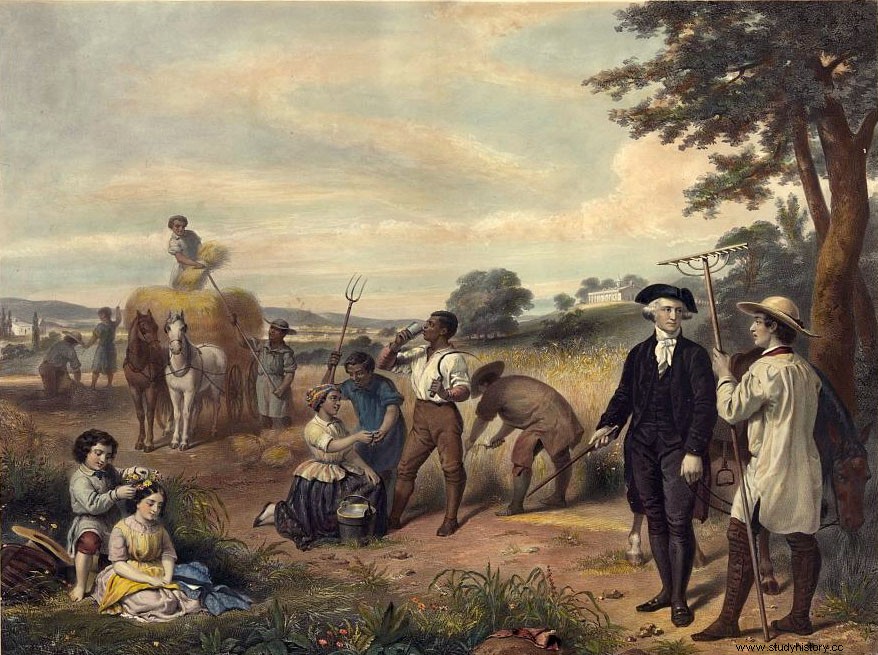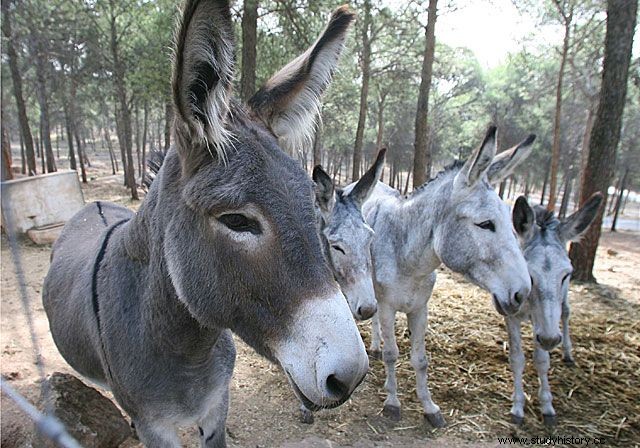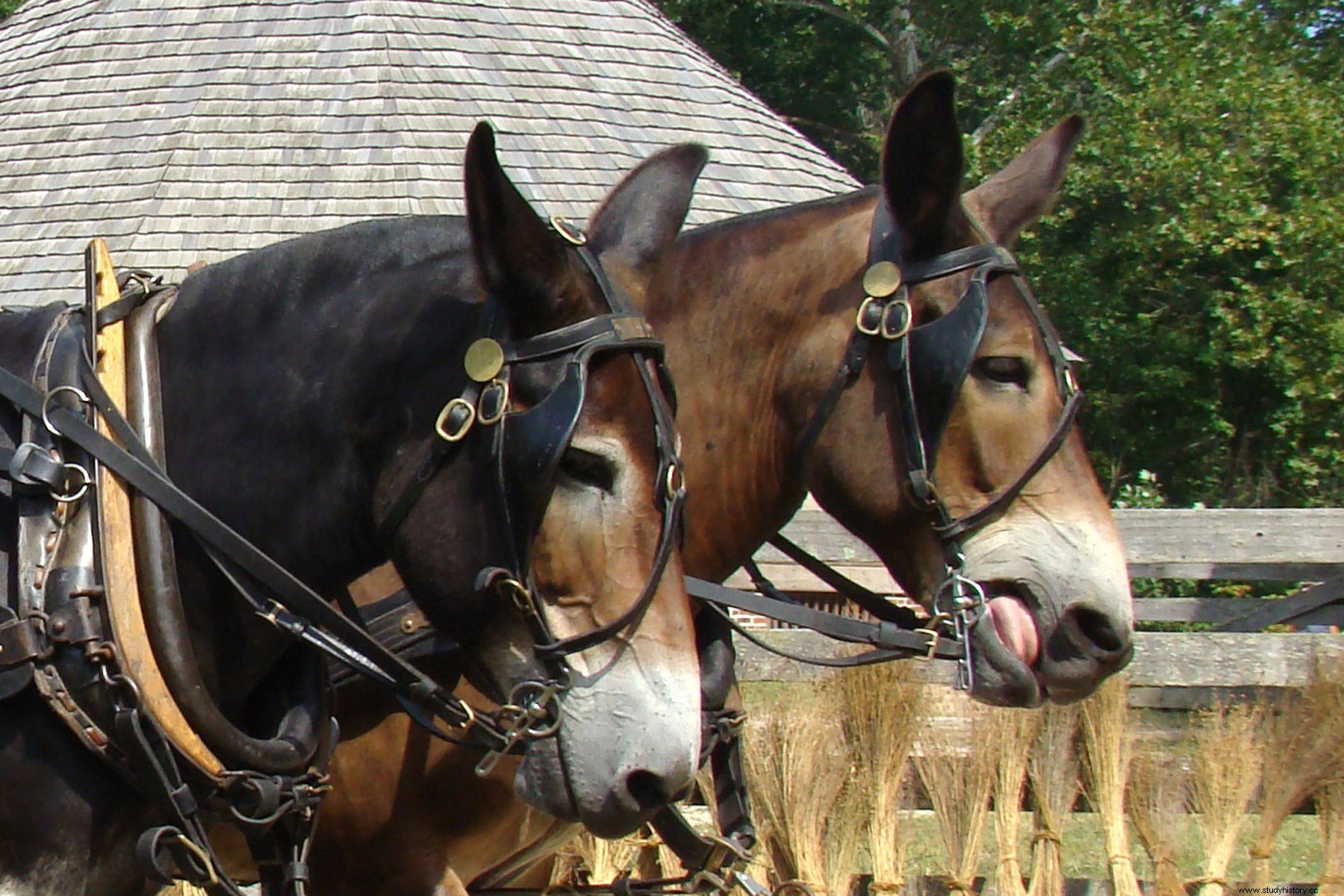After leading the American victory in the Revolutionary War against Great Britain and recognized independence in the Treaty of Paris (1783), George Washington he resigned from his military commissions and returned to his Mount Vernon plantation in Virginia. His retirement only lasted a few years, since in 1789 he was appointed President of the United States, but during that time he was able to enjoy his two great passions:agriculture and livestock. After years of abandonment by the war and with the soil "exhausted" by tobacco plantations, he decided to experiment on his land with new crops and try new techniques. In addition to his own benefit, George Washington thought that this young nation needed a kind of agrarian revolution and used his land to experiment:he replaced tobacco with cereals (they needed less labor than tobacco and if prices were low they could be sold). used as food for people and livestock), started a crop rotation plan to reclaim the land, experimented with various combinations of organic waste to obtain the best fertilizer (created a homemade compost from manure, gypsum, silt and of fish)… I wanted to make the USA the breadbasket of the world.
Today our well-being and the prosperity of America depend on our land, and to do so, we must improve production.

In addition to farmland, George Washington had Mount Vernon a farm with horses, sheep, pigs, cows, chickens, ducks, turkeys, deer... and even a camel -in 1787 he acquired it to entertain his guests-. His work in this field focused on improving the conditions of the animals to increase the number of offspring and... on the mules (sterile animal resulting from the cross between a donkey and a mare). He knew that mules were much stronger and more resistant than horses, that they lived longer and cost less to maintain, so they were ideal for work in the fields. But George Washington wanted the best of his for the new nation and, therefore, he decided to raise his own mules (in addition to the Father of the Country , some also consider him the Father of the American Mule ). Virginia had excellent horses, including thoroughbreds (a cross between an English mare and an Arabian stallion) and an Arabian breed, but the donkeys and mules of the colonies were not of the same quality. He had to find the best donkey in the world to cross it with his mares and that meant... getting a Spanish donkey .

Andalusian donkey
However, the acquisition of a Spanish donkey turned out to be more difficult than he had imagined. The transport of the animals was expensive and, in addition, it was forbidden to take them out of Spain without the direct permission of the king. After several attempts, and when George Washington had almost given up, William Carmichael, the charge d'affaires at the Spanish court, managed to send the petition to the Count of Floridablanca, Secretary of the Office of State. The King of Spain, Carlos III , he ordered to send two of the best copies as a sign of respect -remember that Carlos III had supported the independence of the Thirteen Colonies against our common enemy-.
On October 7, 1785, the precious gift arrived in Glocester (Massachusetts). But there weren't two donkeys that arrived at the port, only Royal Gift did. (Royal Gift), which is how they named him, because the other donkey died during the journey. Washington sent his foreman John Fairfax to supervise the trip and escort the donkey all the way to Mount Vernon with very precise instructions that he receive all possible attention and that he not travel more than 25 km. up to date. On December 5, George Washington saw Royal Gift for the first time. , that according to the descriptions he made of him in his letters, it could be an Andalusian donkey. Washington wanted to start breeding the mules right away, in fact shortly after arriving he sent Royal Gift to a tour of the southern states to generate interest among other farmers and even placed newspaper ads offering the services of the donkey to cover mares the following spring. The problem is that our beloved donkey was a bit stubborn and when it came time to cover the mares… there was no way. Of course, with the donkeys there was no problem. So, Washington gave instructions to put two donkeys to stimulate him and when he was well excited they put the mare. The trick worked and Royal Gift he began to earn his bread with the sweat of his… behaving like a champion.

Mules
Unfortunately, the glory of Royal Gift as a stallion it was short. During a trip to South Carolina in 1793 he "fainted" and feared for his death. As things were, and given the possible inability to fulfill his services as a stallion, George Washington decided that he should stay in South Carolina where he lived the rest of his days, without the stress of having to measure up day in and day out. day after day, until he died in July 1796. Washington then focused on two offspring of Royal Gift :donkeys Compound and Knight of Malta (as I said, it also covered the donkeys). When Royal Gift arrived at Mount Vernon there were 132 horses/mares and no donkeys or mules; in 1799, when George Washington died, there were 27 horses/mares, 20 donkeys/donkeys, and 63 mules.
Of course there were mules in the colonies before Royal Gift arrived. , but George Washington improved the breed and popularized its use on agricultural plantations. To such an extent that many of the donkeys and mules in the US today are descended from that Spanish donkey.
